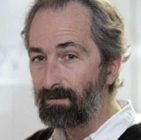Near Neutrality: the Mutational-Hazard Theory of Genome Evolution
Prof. Michael Lynch
Understanding the mechanisms of evolution and the degree to which generalities exist among phylogenetic lineages requires information on the rate at which mutations arise and their effects at the molecular and phenotypic levels. Although procuring such data has been technically challenging, high-throughput genomic sequencing is rapidly expanding our knowledge in molecular area. With information on spontaneous mutations now available in a variety of organisms, general patterns have emerged for the scaling of the mutation rate with genome size, and support will be presented for the hypothesis that natural selection pushes mutation rates down to a lower limit set by the power of random genetic drift rather than by intrinsic limitations on repair mechanisms.
Although often treated as a separate process, mutation plays a central role in "nearly neutral" hypotheses in evolution. For example, for genes with more complex structures are subject to higher rates of mutational degeneration simply because they are larger mutational targets. However, because mutation is a very weak force at the nucleotide level, the efficiency of such mutation-associated selection becomes of diminishing significance in populations with small effective sizes, causing evolution to proceed down very different pathways than would otherwise be possible. This principle will be illustrated with several examples.
Not only do larger, multicellular organisms have higher mutation rates / nucleotide site / generation than unicellular species, but gene structures in the former have evolved in such a way as to become larger mutational targets. Several types of evidence will be shown to be broadly consistent with the mutational-hazard theory: 1) the differential expansion of intron numbers in various phylogenetic lineages; 2) the diversification of protein-architectural features; and 3) the relative levels of efficiency of DNA polymerases and mismatch-repair enzymes in eukaryotes relative to prokaryotes.
Suggested readings
- Lynch, M. 2006. The origins of eukaryotic gene structure. Mol. Biol. Evol. 23: 450-468.
- Lynch, M. 2010. Evolution of the mutation rate. Trends in Genetics 26: 345-352.
- Lynch, M. 2011. The lower bound to the evolution of mutation rates. Genome Biol. Evol. (in press, available at PubMed).
